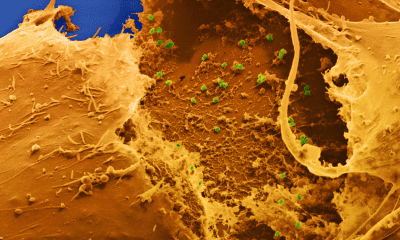Follow Us @
All about the episiotomy during childbirth
– Pregnancy tips, how to remain healthy, health and wellbeing, latest symptoms and treatments.
All about the episiotomy during childbirth
Also read: Importance of the pelvic floor: 'Half of pregnant women suffer from urinary incontinence'
What is an episiotomy or cut?
An episiotomy or cut is a cut in the area around the perineum. The midwife will assess the risk of a serious tear and decide whether or not to make a 'cut' to prevent a complete rupture.
How does the cut proceed?


© Getty Images
An episiotomy is performed when the baby's head is visible and during a contraction.
An episiotomy involves enlarging the vaginal opening by making a small incision of a few centimetres in the dam (the perineum or the area between the vagina and the anus) using scissors. This is always done under anaesthesia: if no epidural has been given, you will be given local anaesthesia so that the episiotomy is painless.
Also read: Contractions: the different types and how to recognize them
Healing after the cut
Also read: Why are pelvic floor muscle exercises not only important for pregnant women?
When is an episiotomy or cut indicated?
In the past, an episiotomy was performed almost systematically under the pretext that a natural tear was more difficult to repair than an episiotomy. However, this is not the case. The Federal Knowledge Centre for Health Care therefore advises against systematic clipping. Once you have had a clipping, the chance that you will at a next birth again need an episiotomy. Therefore, an episiotomy should only be performed in specific circumstances.
- Fetal distress: when the baby is clearly in pain, the expulsion must be accelerated by administering oxytocin. The perineum does not then have time to expand naturally. An episiotomy is often necessary to accelerate the birth.
- If a difficult birth is expected, for example because the baby is large or if labor is not progressing sufficiently because the baby's head is large.
- If there is a there is a risk of a serious or complex tear of the perineum. This natural tearing can lead to many complications after childbirth, such as damage to the anal sphincter and the muscles of the urinary tract, anal or urinary incontinence, etc.
- At a artificial delivery: In the case of suction cup deliveries or if other instruments are required, an episiotomy may be necessary.
Does a gynecologist have to ask permission for the episiotomy?
In the past, a gynaecologist rarely asked permission for an episiotomy, but that should be different now. Dr Isabelle Dehaene, gynaecologist at Ghent University Hospital and spokesperson for the Flemish Association for Gynaecology and Obstetrics (VVOG): “The idea is indeed that the gynaecologist or midwife explains to the patient why an episiotomy is medically indicated and then asks if it is okay for the episiotomy to be performed.” Unfortunately, in practice it still happens here and there without consultation.
Also read: Can you prepare your breasts for breastfeeding?
Can you avoid having to get a haircut?
You can prepare the perineum for childbirth as much as possible by using specific perineal massage techniques. Perineal massages make the perineum more supple and ensure good elasticity. However, it has not been proven whether they can prevent an episiotomy.
In addition, it is important to train your pelvic floor muscles so that you can control them well. Dr. Hedwig Neels: “Both contraction and relaxation are very important. During labor, your pelvic floor muscles are stretched extremely. You don't want them to tense up like a spasm. At the moment of labor, you should just be able to let them go. If women are unsure whether they are doing this correctly, they can always have themselves checked by a specialist. I always do this with 3-4D pelvic floor ultrasound. Then they can see for themselves how they make the opening bigger when they try to push.”
Also read: Exercises to strengthen your pelvic floor
Also read: The Pelvic Floor: Identify and address pelvic floor problems with the free Selfcheck
Sources:
https://kce.fgov.be
www.gynandco.be
https://directivedatabase.nl
www.knov.nl
All about the episiotomy during childbirth
Follow AFRILATEST on Google News and receive alerts for the main news about celebrities, soap operas, series, entertainment and more! All about the episiotomy during childbirth
SHARE POST AND EARN REWARDS:
Join our Audience reward campaign and make money reading articles, shares, likes and comment >> Join reward Program
FIRST TIME REACTIONS:
All about the episiotomy during childbirth
, click allow to follow this topic and get firsthand daily updates. please don’t be shy be the first to leave us a comment in the comment section. best pregnancy articles and all about fertility diets.
JOIN US ON OUR SOCIAL MEDIA: << FACEBOOK >> | << WHATSAPP >> | << TELEGRAM >> | << TWITTER >
All about the episiotomy during childbirth
#episiotomy #childbirth



 Online Earning2 months ago
Online Earning2 months agoSee the details about the fall of Bitcoins



 Trending Game3 months ago
Trending Game3 months agoDying Light 2 – 7 tips to do well in the zombie adventure



 USA today entertainment3 months ago
USA today entertainment3 months agoBLACKPINK's Lisa creates history with solo single



 Fashion3 months ago
Fashion3 months agoLearn different ways to use scarves; new bet for the summer of 2024



 Culture2 months ago
Culture2 months agoDiscover the Nike Run SP routes



 Trending Game3 months ago
Trending Game3 months agoDRAGON BALL Sparkling! ZERO rips through the skies on October 11th



 Trending Game3 months ago
Trending Game3 months agoSeason of the Reptile Arrives in Mortal Kombat 1 with Trailer



 Trending Game3 months ago
Trending Game3 months agoSonic and Friends appear in Super Monkey Ball Banana Rumble





























